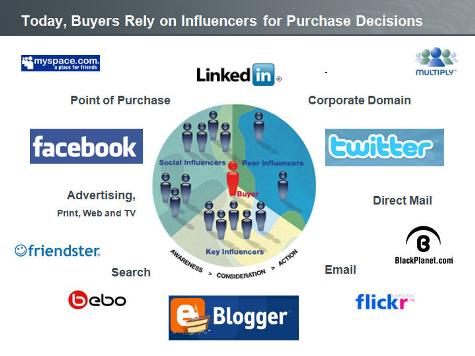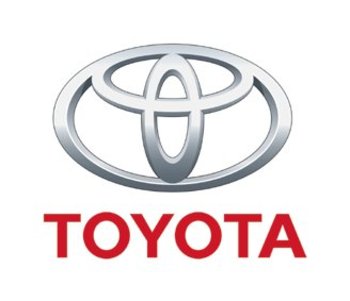 Early efforts in social media marketing have created a tremendous amount of buzz and interest, but surprisingly few case studies focus on monetization.
Early efforts in social media marketing have created a tremendous amount of buzz and interest, but surprisingly few case studies focus on monetization.
A recent study by Ketchum and Nielsen shows the number-one activity of social media users (online or offline) is reading blogs – even above TV!
So it's clear that social media is here to stay, and accountable programs must be created to deliver performance and ROI. Here are 3 steps to help you get started:
#1: Define Key Performance Indicators (KPIs) and Measure Against Them
In order to hold any marketing channel accountable, there first must be a framework of metrics that can be tracked, compared to a benchmark (industry or prior program performance) and analyzed over time. Social channels are no different. When looking to assign accountability to social programs, the first step is to define KPIs and measure against them. The three key components to track are:
Expanded Reach to New Audiences
Reach refers to the additional impressions that social channels provide to a program. Reach addresses the first value of social media marketing: tapping into the power of the social web to engage previously unreachable prospects to your brand message. In addition, reach through social channels increases a brand's credibility as new consumers touched by social programs are being introduced by their peers or other respected “voices” on the social web. For example, the impact of a consumer seeing a friend recommend a brand as a result of a social program is much greater than seeing a static ad from the brand.
Influencer Sharing Behavior
Influencers (a.k.a. customers advocating for your brand) are essential to maximizing the viral impact of your social media programs. In order to leverage them properly, you need to determine the level of engagement between an influencer and the members of their social graph.
All influencers are not created equal. Some are exceptional at sharing a message but offer little in the way of engagement with their peers. Others generate little groundswell or buzz, but the peers they do touch take their advice. Understanding who your influencers are within your customer base and tracking their sharing behavior are critical to optimizing program performance.

With the rise of social media, consumers are increasingly relying on user-generated content for purchase decisions.
Conversions and Monetization
Every social program must be associated with a call to action. Subscriptions to email lists, product purchases, signing up as a Facebook fan or downloading a free trial are all examples of calls to action. In order to measure monetary contribution to business goals, the marketer must assign value to the social program's call to action and then track the conversions. Too often, social purists take a passive approach to program execution. The call to action need not be a sale. In fact, it could be motivating users to generate content to be added to a brand's online community. The point here is that a defensible value for the action must be defined and tracked.
The combination of these three KPIs (reach, sharing behavior and monetization) provides clear program success criteria and can be weighted based on a program's objectives. In the case of an awareness campaign, a marketer may place more weight on reach and sharing activity. In the case of a direct response program, the opposite weighting could be applied.
Get World-Class Marketing Training — All Year Long!
Are you facing doubt, uncertainty, or overwhelm? The Social Media Marketing Society can help.
Each month, you’ll receive training from trusted marketing experts, covering everything from AI to organic social marketing. When you join, you’ll also get immediate access to:
- A library of 100+ marketing trainings
- A community of like-minded marketers
- Monthly online community meetups
- Relevant news and trends updates
#2: Create Predictable Results With Targeting
When looking at potential advocates to share a brand message on the social web, the number of friends one has on Facebook or the number of followers one has on Twitter is important, but it's not the most important factor. The real key to driving a predictable program is targeting.

Discover Proven Marketing Strategies and Tips
Want to go even deeper with your marketing? Check out the Social Media Marketing Podcast! Publishing weekly since 2012, the Social Media Marketing Podcast helps you navigate the constantly changing marketing jungle, with expert interviews from marketing pros.
But don’t let the name fool you. This show is about a lot more than just social media marketing. With over 600 episodes and millions of downloads each year, this show has been a trusted source for marketers for well over a decade.
Too often, social media programs start on the social web (where customer-specific data is scarce) and not within the CRM databases that companies have developed to provide deeper insight into their customers. Accountable marketing programs need to be predictable, and predictability can only be driven on the social web once a brand identifies its most engaged customers and who among those are willing to advocate on its behalf.
 Consider the current crisis faced by Toyota and how targeting could help drive advocacy, while a lack of targeting could be a disaster! I am a lifelong, loyal Toyota owner. I had my first Camry in 1996 and leased my second Camry in 1998. In the meantime, my wife purchased a Toyota 4Runner in 1999 and another three years later.
Consider the current crisis faced by Toyota and how targeting could help drive advocacy, while a lack of targeting could be a disaster! I am a lifelong, loyal Toyota owner. I had my first Camry in 1996 and leased my second Camry in 1998. In the meantime, my wife purchased a Toyota 4Runner in 1999 and another three years later.
We followed these vehicles with a Sienna Minivan, a brief stint with a certified pre-owned Lexus and finally my 2007 Camry. I have owned no fewer than 6 Toyota vehicles in the last decade. I love these cars; I stand ready to defend them.
As I mentioned before, marketers need to understand that all customers are not created equal on the social web, and the number of fans and followers the brand has is not the critical data point. It's how customers feel about the brand and the relative propensity they have to share POSITIVE sentiment with their social graph. Under the current system without proper social media targeting, Toyota is likely to ask my neighbor to advocate for the brand, who bought his first Camry last year and would love a reason to share his negative sentiment with his over 2,600 followers on Twitter and 700 friends on Facebook.
#3: Foster Viral Sharing With Incentives
Social media purists – take a deep breath before reading on. Social media marketing is subject to the same rules and limitations as other marketing programs. Specifically, there's no way social media can become an accountable channel if it's reliant on “lighting in a bottle” –type programs. Viral activity from a set of advocates needs to be predictable. Equally important, marketers must be able to influence the social participation in their programs. Incentivized sharing provides this level of predictability as well as an opportunity to throttle activity.
Rewarding customers for behavior, once again, is not a new concept. Airlines, hotels, financial institutions and even coffee shops consistently reward customers for loyal patronage. Why not apply that same logic to advocacy on the social web? Marketers need to build bi-directional incentives into social programs. This means they reward the influencer for inviting friends to participate in a brand's program and then reward the influencer's friends for acting on the viral invitation.
In other words, both the brand advocate and the advocate's friend are treated like VIPs for engaging with the brand via the social web. Programs that include these bi-directional incentives perform two times better than those that rely solely on altruistic motivation for sharing activity. As long as marketers are transparent about the incentivized offers, the integrity of the channel is maintained while the marketer can access a dial to turn KPIs like reach, sharing behavior and monetization up or down.
There's been real innovation in the last year around social media marketing and many leading brands have taken advantage of the wave. In order for it to continue, marketers must introduce a program-level discipline to their social marketing efforts. The concepts above are a great place to start. Define KPIs and track at the individual and program level over time, target social programs at your most engaged customers and introduce incentives for social sharing activity.
What are your thoughts? Is your organization holding social media marketing accountable, and if so, how? Please comment in the box below.
Attention Agency Owners, Brand Marketers, and Consultants

Introducing the Marketing Agency Show–our newest podcast designed to explore the struggles of agency marketers.
Join show host and agency owner, Brooke Sellas, as she interviews agency marketers and digs deep into their biggest challenges. Explore topics like navigating rough economic times, leveraging AI, service diversification, client acquisition, and much more.
Just pull up your favorite podcast app, search for Marketing Agency Show and start listening. Or click the button below for more information.

